Today, I look at the decade which defined psychological horror as a genre and took a more realistic look at stories of the supernatural. Oh, and Happy Halloween.
Criteria:
Must be a horror film, or film with horror-like elements
Must be a film made/released between 1960-1969
First, a little background...
Within the span of a decade, craze around the atomic bomb and the dangers of science began to die down. People were less concerned with science now and more with the direction their country was going. With many progressive political minds sprouting up in the decade, including John F. Kennedy, Martin Luther King Jr., Malcolm X, etc., things were changing. Kids were getting more rebellious and opinionated, and the Woodstock generation began to start voicing their concerns on issues such as civil rights for minorities and gays, the war in Vietnam, and legalization of certain drugs.
Then Hollywood began catching on and starting to produce more provocative films, that broke the Hays Code, showing sex and violence and civil rights issues and swearing and drinking and smoking. There was outrage but also praise from critics and audiences. Movies like
Who's Afraid of Virginia Woolf?, The Graduate, Guess Who's Coming to Dinner, Barbarella, and
The Wild Bunch caused controversy with their depictions of the things listed above. Psychological horror began to become a prominent genre, with big-name directors such as Alfred Hitchcock, Michael Powell, and newcomer/art filmmaker Roman Polanski taking the reigns of the genre.
In the late 1960's, culture changed even more when the Manson Family murders became the subject of public interest and the court cases became a cultural event. Showing the dark side of the Love Generation, the Manson murders were so graphic and brutal that they sort of opened people's eyes to how ugly violence is, and made filmmakers more willing to push the boundaries of the ratings system, which was recently put in place. One of the murder victims was the pregnant actress Sharon Tate, wife of Polanski, which also showed that even the biggest stars in Hollywood, even pregnant stars in Hollywood, were not safe from the violence in the world, which was kind of culture shock, as many in the Western world view celebrities as above normal people, and therefore safer from attack.
The world was changing drastically in the span of just a few years, and so was the world of cinema, and in turn, the world of horror films...
The List:
15.
The Masque of the Red Death (1964): One of the better Roger Corman adaptation of a Poe short story, it's a little more artsy than others and was a bit of a box office failure, but has since garnered a cult following among audiences and critics. It's got some great scenery and moody atmosphere, as well as vibrant colors and costumes, as well as a good performance by Vincent Price. Definitely the best Corman/Poe feature.

14.
Quartermass and the Pit (aka
Five Millions Years to Earth, 1967): The final installment of the
Quartermass Trilogy, this film looks at the eerie idea of aliens influencing human evolution, and is equal parts science fiction and horror. In my opinion, one of the more underrated alien films of all time, appropriately placed in what is the most underrated decade for horror. With some great acting, and a well-written plot that stays true to its' source material, this installment in the
Quartermass series is arguably the best.
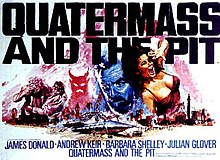
13.
At Midnight I'll Take Your Soul (1964): This entry comes from a country rarely recognized for horror, or film in general: Brazil. This rather ballsy horror film packs tons of gore and creepy imagery, as well as spawning the underrated horror icon Coffin Joe, who was created and portrayed by director Jose Mojica Marins. One of the most vile and despicable characters to ever grace the silver screen, Joe is an amoral and sadistic man who has a powerful hatred for religion and emotion. This film was followed by the equally experimental and gruesome film
This Night I'll Possess Your Corpse in 1967, and the long-delayed
Embodiment of Evil in 2008, both of which are worth a view.

12.
The Devil Rides Out (aka
The Devil's Bride, 1968): One of the Hammer Horror films based on a more modern novel, this Terence Fisher film starring regular Christopher Lee and James Bond and
Rocky Horror star Charles Gray is a well-produced, well-scripted entry into the popular devil worshiper subgenre. The Goat of Mendes, prominently featured in marketing, only appears sparingly, which I respect. Despite some dated effects, the entire film is played very straight, with all actors obviously taking the somewhat laughable subject matter very seriously, which produces a film that has a very ominous feeling, and doesn't come off forced or campy whatsoever.

11.
Viy (1967): If you are into arthouse horror cinema, then you'll love this Russian horror film. Adapted from a Nikolai Gogol story, it maintains the same basic plot, imagery, and action, but also alters quite a bit. The unique imagery and atmosphere make this film worth a watch by themselves, but it's actually an important piece of film history, as it was the first Soviet-era horror film to be released in the USSR.

10.
Hour of the Wolf (1968): Ingmar Bergman, one of the greatest directors of all time, brings this tale of surrealist horror to the fray, starring regular Max von Sydow. A disturbing trip of a film that has no linear plot structure, the movie should be seen by anyone with an interest in surrealist filmmaking or the ways film can be used to tell unique and non-structural stories. I would not recommend it to anyone expecting a traditional narrative structure with the usual horror tropes.
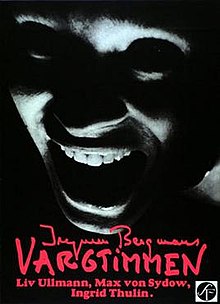
9.
Village of the Damned (1960): One of the few "creepy kid" films that's genuinely unnerving, the plot follows a village which is suddenly hit by a strange series of events, including all of the town's women getting pregnant and suddenly birthing at the same time, and all of their children having similar appearances with similarly quick growing paces. The strangest part is that the children having bright, piercing eyes and seemingly telepathic abilities. George Sanders gives a great lead performance, and the child actors are legitimately scary. The film also has a lot of iconic, frightening imagery, from the children's striking and knowing eyes to the famous shot of the wall crumbling (a metaphor for breaking down people's minds).

8.
Wait Until Dark (1967): This thriller from Terence Young stars Audrey Hepburn as a blind woman who is targeted by a gang of ruthless criminals, led by Alan Arkin, who believe she is smuggling drugs. The film was the most successful film of the year, and was an Oscar-nominated release and watching it, you can see why. Hepburn and Arkin are both phenomenal, and the suspense of the film is unmatched by any other in the genre that year. The climax also contains one of the first and most effective jump-scares of all time. In fact, the climax was so intense for the time that in order to add to the effect, movie theater owners slowly dimmed the lights to their legal limits as the film went on, then, as the climax grew in intensity, they would shut off each light completely, one by one, as the light bulbs in the scene were smashed by the characters. A really cool technique I wished more people would try. Anyway, it's definitely one of the best thrillers of the 60's, and deserves all the praise it gets.
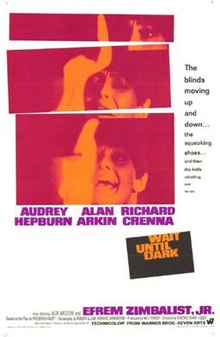
7.
The Innocents (1961): Jack Clayton's psychological/supernatural thriller starring Deborah Kerr and Michael Redgrave is a film that is wholly reliant on its' atmosphere. Cinematographer Freddie Francis employed many clever techniques, such as "deep focus" and lighting, to make the film more atmospheric and striking. One of the most subtle and convincing ghost stories out there, it is also extremely close to the source material, while also standing alone as its' own unique product.

6.
The Birds (1963): Alfred Hitchcock's brilliant and strangely terrifying film about birds that attack the SF Bay Area at random, this movie is infamous for its' iconic and intense scenes of birds attacking a school yard and gas station, for its' inventive camera work, and special effects, which includes model birds, animatronic birds, and even real birds. Tippi Hedren went through hell trying to get this movie made, but it payed off big time for her career. The film remains one of Hitchcock's most beloved and recognizable films.

5.
Night of the Living Dead (1968): This little indie film spun off into the most influential and successful zombie franchise of all time. George A. Romero, the director behind the series, is humble enough to state he just got really lucky and never intended for this to become his life's work or become as influential in culture as it has. People don't really think about it, but this is up there with
Star Wars and
Batman as one of the most influential films ever made, from a pop culture standpoint. With a subtext about race relations in 1960's America, and a lot of imagery that sticks with you,
Night of the Living Dead is one of those movies that stirred up controversy and got people talking, and is one of the movies that's responsible for the R-rating being put in place. It makes sense, as the film is actually pretty graphic for a movie made in the 60's, with graphic stabbing and guttings and scenes of flesh being chewed on. So much was inspired by this film that it was selected for preservation by the Library of Congress.

4.
The Haunting and
Rosemary's Baby (1963 and 1968, respectively; tie): The former is the famed Robert Wise's masterwork of suspense and atmosphere, based on a novella by Shirley Jackson about a social experiment conducted at an infamous haunted manor that goes awry. While the plot sounds like typical camp fare, like many films of the period,
The Haunting takes a mature, complex approach to the subject matter, resulting in one of the creepiest psychological/supernatural horror stories of all time. With terrific acting, chilling music, and intricately detailed sets and cinematography, it's no wonder this movie is considered one of the best films of all time.
The latter is Roman Polanski's dark psychological thriller about a young couple whose baby may be the target of their neighbors, who may or may not be Satanic cultists. Brilliant performances by Mia Farrow, John Cassavetes, Ruth Gordon, and Ralph Bellamy, as well as many other greats, elevate the film above the typical grindhouse stuff of the late 60's. Not only that, but the detailed direction and great screenplay make the film worth a few re-viewings, as does the many subtle clues you may have missed the first time around. And did I mention the haunted lullaby music heard over much of the film?
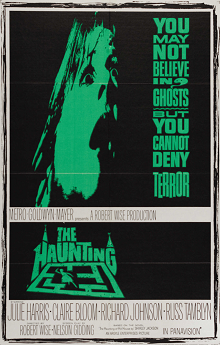

3.
Eyes Without a Face and
Whatever Happened to Baby Jane? (1960 and 1962, respectively; tie): Two of the most disturbing films of the decade, both focus on the unstable psychology of women who have become delusional over the years.
The former is a French-Italian production. Much like other psychological thrillers of the time, it was panned at first, but later grew recognition. An eerie look at a father trying to do right by his daughter, the movie follows a doctor who tries to help his disfigured daughter by kidnapping beautiful girls and trying to graft their faces onto his daughter's. An influential and fucked up movie, full of weird imagery that gets under the skin (most notably the daughter's emotionless doll mask), it's definitely worth a watch.
The latter is a film no one believed in. Director Robert Aldrich was rejected by many major studios, who said that the lead actresses Bette Davis and Joan Crawford were too old and washed-up. But that was the point. The movie follows an aged child star (Baby Jane) who enjoyed fame in vaudeville theater, but later found trouble getting parts in movies. Her under-appreciated sister, however, was successful in Hollywood, which drove Jane into a rage. Later, the sister was involved in a mysterious car accident, in which she was crippled by being rammed into a gate by a drunk driver. Now, she is crippled and without a friend in the world, being "cared for" by her sister, who uses her power to get sick revenge on her sibling for stealing the limelight away. A disturbing and pitiful picture of two broken women getting petty payback at each other is exemplary of both the depressing downfall of a person's psyche and self-esteem, but also the downwards spiral of these sisters' relationship, all over the chance of fame. Not to mention all the reports of the real-life abuse on set by the two actresses, who truly did despise each other.


2.
Psycho (1960): Alfred Hitchcock's most iconic and possibly his most acclaimed film starring Janet Leigh and Anthony Perkins is a great piece of suspense cinema as well as one of the main films to popularize the twist ending. Infamous for it's "don't be late or you won't be admitted" gimmick, this film is both an achievement in filmmaking technique but also in brilliant marketing. The acting by the main cast is great, the cinematography is (as usual) is fluid and precise, and the pacing of the film is near perfect. Despite being a bit overrated, and having the terrible "explanation" scene at the end, the film is still one of the most important movies ever made, and is one of those films you have to see at least once. Plus, Bernard Hermann's score is spectacular.

1.
Peeping Tom (1960): Michael Powell's visually striking and (even today) disturbingly realistic portrayal of a voyeuristic serial killer who stalks women and kills them on camera was initially panned and called many things, including disgusting trash and exploitive. Luckily, today it's respected as the classic it is. Unfortunately, the reaction to the film ruined Powell's career: he never made another major mainstream film and died thinking himself a failure (edit: Powell actually did live to see his film gain a cult following, but still was sorrowful it took so long to find an audience). The main performance by Carl Boehm is unsettling to say the least, and the cinematography is excellent, and actually kind of off-putting during the murder sequences. Even Brain Easdale's score is engrossing, including a complex piano solo.
Peeping Tom is the best psychological horror film of the 1960's, and one of the best of all time.

(Images: Wikipedia)
Runner-ups:
Repulsion, Cape Fear, Monsters Crash the Pajama Party, The Raven, Mad Monster Party.
 (Image: Wikipedia)
(Image: Wikipedia) (Image: Wikipedia)
(Image: Wikipedia)
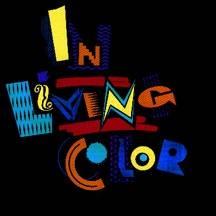






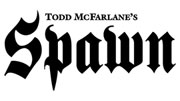 (Images: Wikipedia)
(Images: Wikipedia) (Image: Wikipedia)
(Image: Wikipedia)
 (Image: Wikipedia)
(Image: Wikipedia)
 (Image: Wikipedia)
(Image: Wikipedia)
 (Image: Wikipedia)
(Image: Wikipedia)
 (Image: Wikipedia)
(Image: Wikipedia)
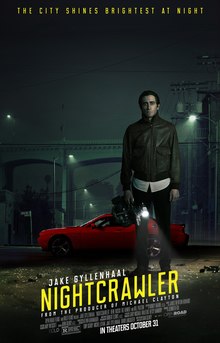 (Image: Wikipedia)
(Image: Wikipedia)
 (Image: Wikipedia)
(Image: Wikipedia)
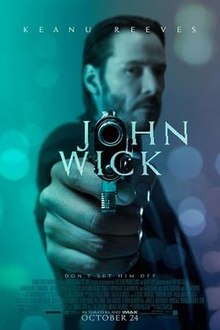 (Image: Wikipedia)
(Image: Wikipedia)
















 (Images: Wikipedia)
(Images: Wikipedia) (Image: Wikipedia)
(Image: Wikipedia)




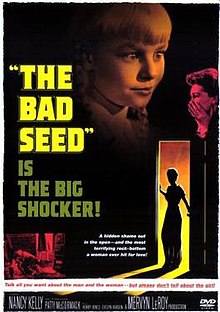










 (Images: Wikipedia)
(Images: Wikipedia)